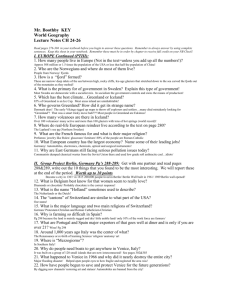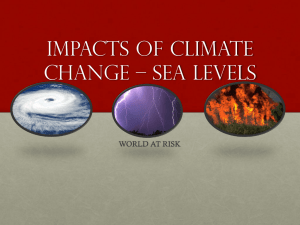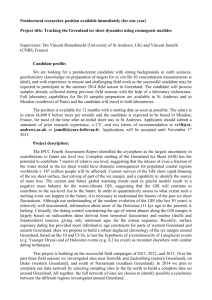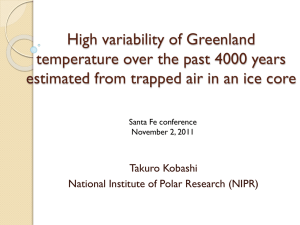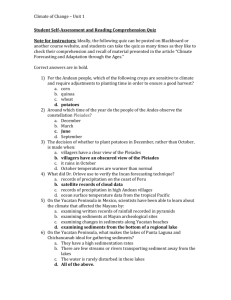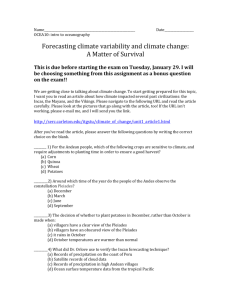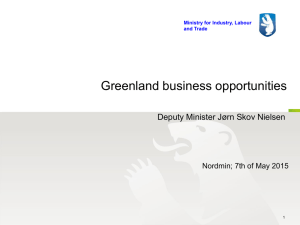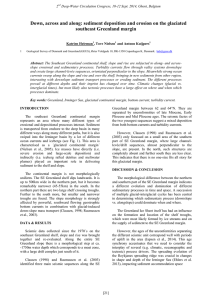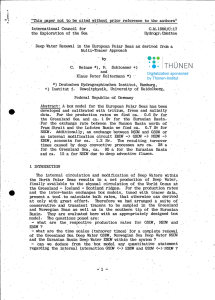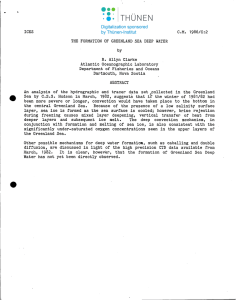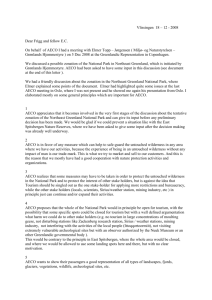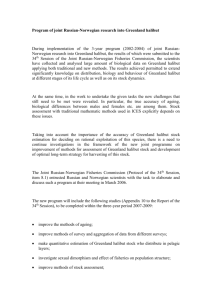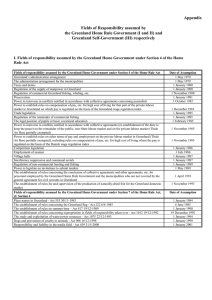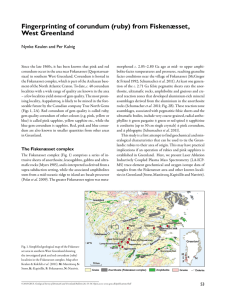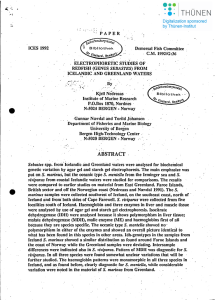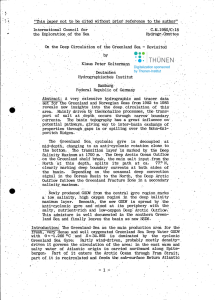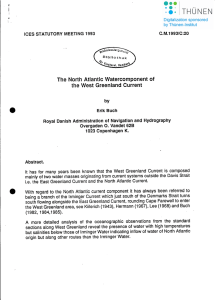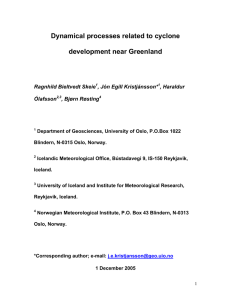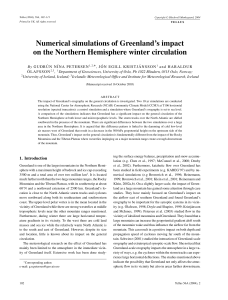GREENLAND GREEN AGAIN
advertisement
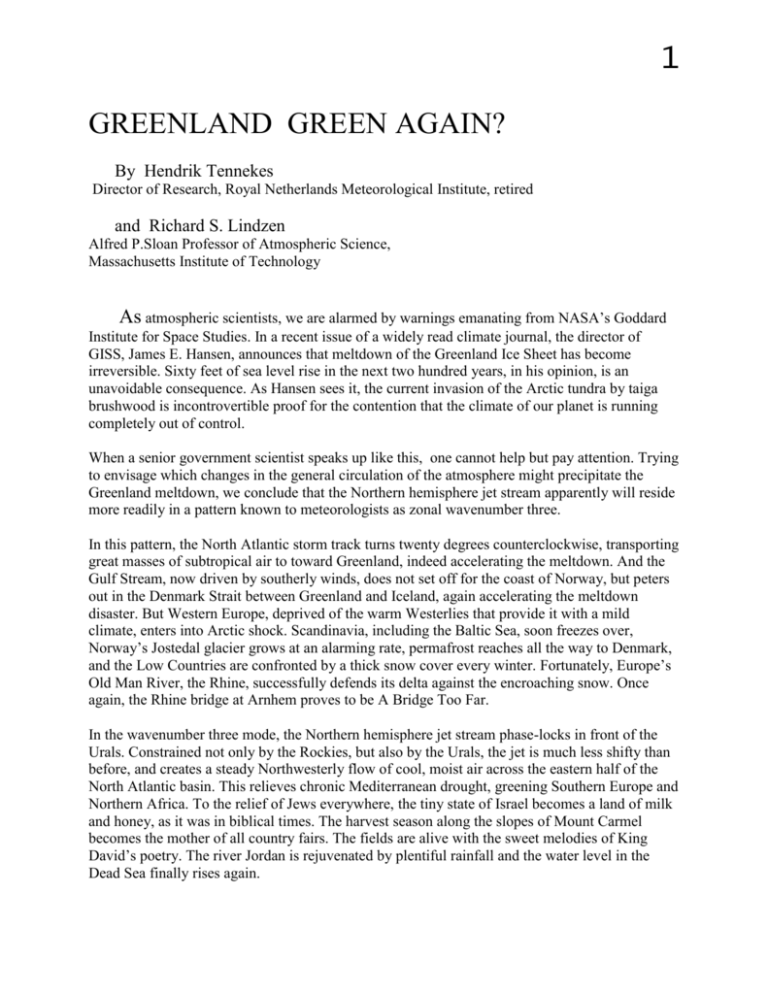
1 GREENLAND GREEN AGAIN? By Hendrik Tennekes Director of Research, Royal Netherlands Meteorological Institute, retired and Richard S. Lindzen Alfred P.Sloan Professor of Atmospheric Science, Massachusetts Institute of Technology As atmospheric scientists, we are alarmed by warnings emanating from NASA’s Goddard Institute for Space Studies. In a recent issue of a widely read climate journal, the director of GISS, James E. Hansen, announces that meltdown of the Greenland Ice Sheet has become irreversible. Sixty feet of sea level rise in the next two hundred years, in his opinion, is an unavoidable consequence. As Hansen sees it, the current invasion of the Arctic tundra by taiga brushwood is incontrovertible proof for the contention that the climate of our planet is running completely out of control. When a senior government scientist speaks up like this, one cannot help but pay attention. Trying to envisage which changes in the general circulation of the atmosphere might precipitate the Greenland meltdown, we conclude that the Northern hemisphere jet stream apparently will reside more readily in a pattern known to meteorologists as zonal wavenumber three. In this pattern, the North Atlantic storm track turns twenty degrees counterclockwise, transporting great masses of subtropical air to toward Greenland, indeed accelerating the meltdown. And the Gulf Stream, now driven by southerly winds, does not set off for the coast of Norway, but peters out in the Denmark Strait between Greenland and Iceland, again accelerating the meltdown disaster. But Western Europe, deprived of the warm Westerlies that provide it with a mild climate, enters into Arctic shock. Scandinavia, including the Baltic Sea, soon freezes over, Norway’s Jostedal glacier grows at an alarming rate, permafrost reaches all the way to Denmark, and the Low Countries are confronted by a thick snow cover every winter. Fortunately, Europe’s Old Man River, the Rhine, successfully defends its delta against the encroaching snow. Once again, the Rhine bridge at Arnhem proves to be A Bridge Too Far. In the wavenumber three mode, the Northern hemisphere jet stream phase-locks in front of the Urals. Constrained not only by the Rockies, but also by the Urals, the jet is much less shifty than before, and creates a steady Northwesterly flow of cool, moist air across the eastern half of the North Atlantic basin. This relieves chronic Mediterranean drought, greening Southern Europe and Northern Africa. To the relief of Jews everywhere, the tiny state of Israel becomes a land of milk and honey, as it was in biblical times. The harvest season along the slopes of Mount Carmel becomes the mother of all country fairs. The fields are alive with the sweet melodies of King David’s poetry. The river Jordan is rejuvenated by plentiful rainfall and the water level in the Dead Sea finally rises again. 2 Meanwhile, a virtual miracle unfolds in Mesopotamia. Abundant rains irrigate the Fertile Crescent. Muslims from all over the world migrate to the verdant banks of the Euphrates and Tigris rivers. After a short but brutal war the Kurds proclaim their Mede Nation along the upper reaches of the Tigris, with Mosul as their capital. The ruins of Nineveh and Nimrud become national shrines. Elsewhere in what is now called Iraq, the countryside becomes a true Garden of Eden, not too dissimilar from the situation 6000 years ago, when centrally administered farming flourished under the leadership of a far-sighted bureaucracy. In the Far East, Northern China and Eastern Siberia enjoy a far milder climate than found in historical tradition, to the benefit of the wheat belts there. This helps to propel the explosive growth of the Chinese economy. But across the Bering Sea, Alaska suffers under frequent spells of extremely cold weather. In Canada, the Hudson Bay loses much of its ice deck, and pioneering farmers begin to crowd its shores. Faced by ever deeper permafrost, the Norse and the Swedes now migrate to Wisconsin and Minnesota, as they did before. And the Danes? They have no choice but to move to their own island territory in the Atlantic. Their famous breweries soon join the exodus. Since the Greenland climate is turning mild so rapidly, the Danes soon begin to plant vineyards in the valleys between the hills in Southwestern Greenland, as their ancestors, the Vikings, did 1000 years earlier. Before too long, expensive Greenland Chardonnay is the talk of the town. Alerted by persistent reports of rapid sea level rise, US Congress awakens. It so happens one day that the senior Senator from Missouri gives a farewell speech commemorating the Louisiana Purchase. Congress catches on quickly and passes the Greenland Ice Sheet Purchase Act. Against vicious opposition of assorted environmentalist organizations, the President of the United States signs the GISP Act into law ten days later, quoting Harry Truman’s famous maxim at his press conference. The buck stops here, he says. Soon the US Secretary of State flies to Copenhagen with several hundreds of government officials, in order to negotiate the deal ordered by Congress. After a full year of gruelling diplomatic and economic deliberations, the parties involved sign the Greenland Ice Sheet Purchase Treaty, at a cost of $2 trillion, payable in one hundred annual instalments of $20 billion each. Under heavy pressure from the UN Security Council, fully onehalf of the proceeds of the GISP Treaty are channelled to the Bill and Melinda Gates Foundation, much respected for its effective, low-overhead relief programs for the poor, hungry, and sick in the Third World. Washington politicians, not particularly known for their charitable attitude toward intergovernmental agencies, stand by as several of these organizations, in disrepute because of their ever-expanding bureaucracies and high overhead costs, enter irreversible meltdown. How is the GISP Treaty financed? The initial stock offering of the Greenland Ice Sheet Purchase Financing Corporation (GISP/FC) is a smashing success, partly because many American citizens continue to worry about the impending privatization of social security. Surplus funds from the booming economy in China also flood the New York Stock Exchange for this purpose. Major Dutch retirement funds, eager as ever to make a quick profit, also invest heavily in GISP/FC. 3 Now US and foreign contractors jump in. They construct immense pipelines for the transport of Greenland meltwater to the Central Valley of California and to the semi-arid regions of the American West. The source regions of the Platte, Nebraska and Arkansas rivers are provided with generous amounts of Greenland water, and the Arizona desert blooms. A continuous convoy of nuclear-powered megatankers sea-lifts Greenland water to arid nations in the Third World. Plans to deliver Greenland water to Africa by pipeline are under development. Pipeline engineers envisage a four-thousand-mile highway along the ocean floor, with giant pumping stations to be erected on the Azores and at landfall near Casablanca, Morocco. Since all these activities help to mitigate dangerous sea level rise, the United Nations cannot help but be grateful to American free enterprise. Greenland green again? We sure hope so. Note: This essay was obviously meant for 1 April. However, it is worth mentioning that there is an experiential basis for most of things mentioned. Similar things occurred in the centuries before the industrial revolution. Mankind generally dealt with them with imagination and success. There is little reason to suppose that our much richer society will prove less resourceful should the need arise. (revised by R.S. Lindzen on 9 March 2005, final polishing by H. Tennekes 13 January 2006)

